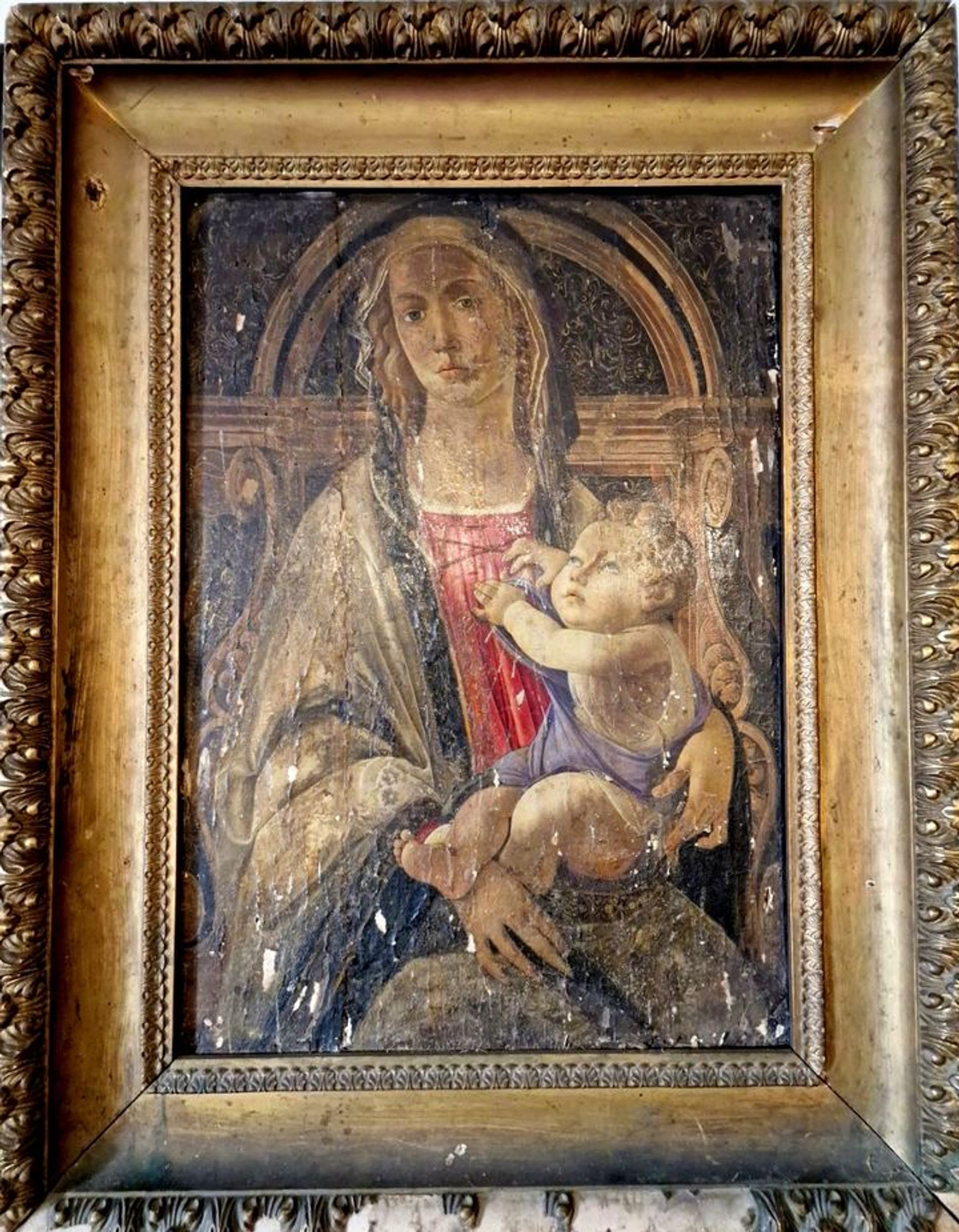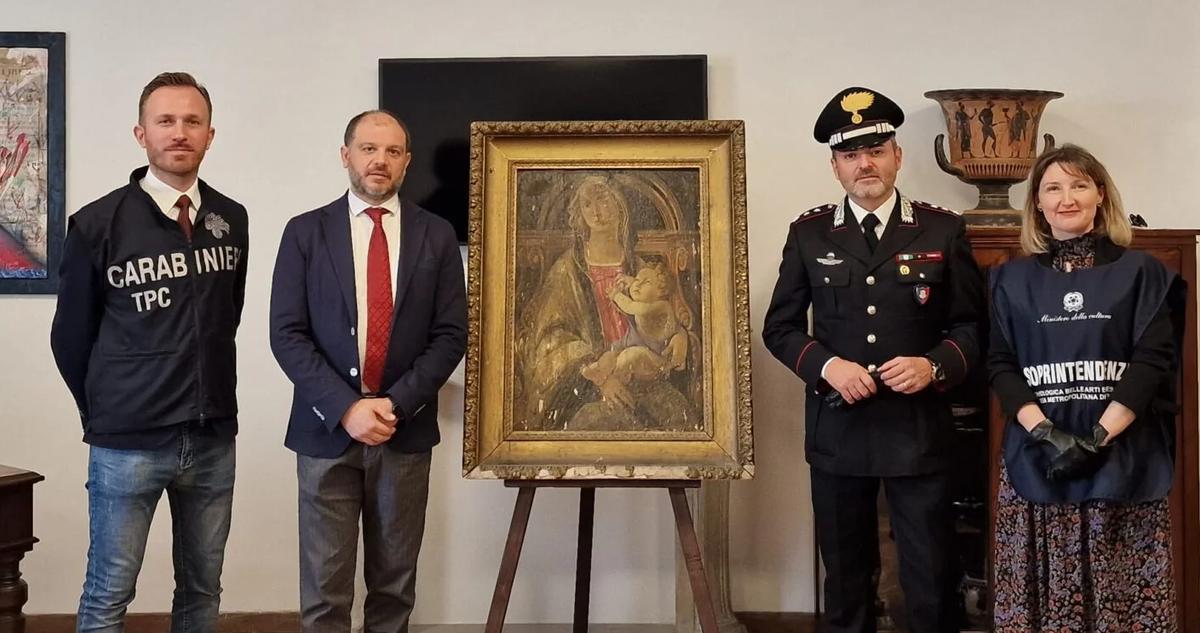Italian police have recovered a painting they believe to be by Renaissance master Sandro Botticelli in Gragnano, near Naples, after the authorities lost track of it more than half a century ago. A depiction of Madonna and child, the painting, which has badly deteriorated, will undergo a major restoration carried out by the Italian culture ministry. It is likely to be permanently displayed in a museum in Naples.
Massimiliano Croce, head of the Carabinieri TPC art squad, said at a conference last week that the painting was of “inestimable value”. The work is believed to have been donated by Botticelli to a farmhouse in Gragnano at the behest of Pope Sixtus IV, who was trying to ingratiate himself with members of the powerful Medici family who owned property in the area, Giuseppe Di Massa, an art historian from Gragnano, told Italian newspaper Il Mattino.
The painting was subsequently moved to the Santa Maria delle Grazie chapel in the Gragnano area, where it remained until the early 1980s, when it was relocated in preparation for a restoration of the building following an earthquake. It apparently found its way into the hands of the local Somma family, who claim they kept it hidden away in order to protect it from art traffickers, Il Mattino reports.
While listed as a protected work in 1931, 1941 and 1968, the painting was last inspected by culture ministry officials over 50 years ago for reasons that remain unclear. It was rediscovered thanks to the mediation of Nello D’Auria, mayor of Gargnano, after he was contacted by Michele Somma, supposedly the current owner of the work. “I was approached by Michele [Somma] who was in tears and wanted to share a secret,” D’Auria told newspaper Il Messeggero. “We immediately got to work to return this painting to the experts so they could take care of it and allow it to be enjoyed by the community.”

The painting by Sandro Botticelli was forgotten for 50 years Courtesy: Soprintendenza ABAP
An analysis conducted by the Naples branch of the superintendence, the culture ministry’s urban planning and conservation arm, revealed that the painting is in a “critical” condition and has suffered discolouration due to over-painting and the oxidation of a protective varnish. Experts from the culture ministry’s Central Institute for Restoration will now carry out a restoration that is expected to take a year.
The Carabinieri are now assessing legal documents to determine whether the Somma family are the rightful owners. If they are not, ownership of the painting could pass to the Italian state. Regardless of the outcome, the painting is likely to be permanently displayed in an as yet unnamed museum in Naples, officials say. “Keeping a work of this value in a private house would be very dangerous,” Croce said.


